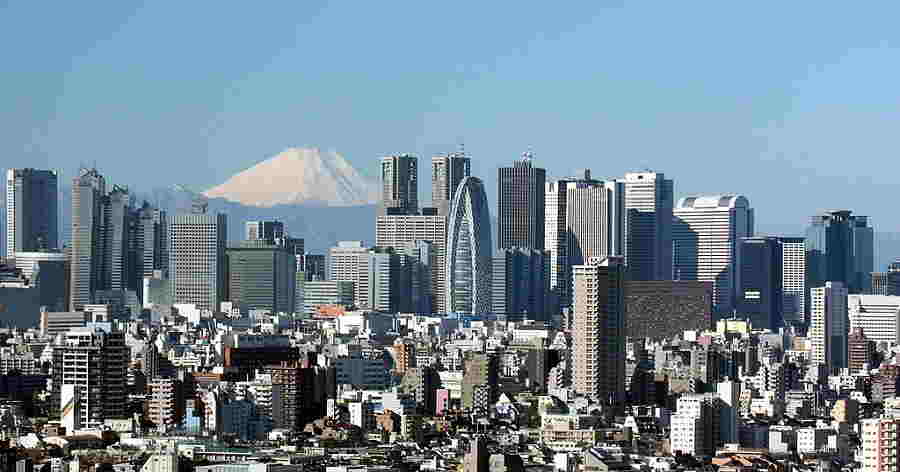

Tokyo is the most populous metropolitan area in the world, with an estimated population of over 38 million people. The population of Tokyo has grown steadily since the end of World War II, and is now the largest urban area in the world. Tokyo is a prefecture, or region, of Japan, and is made up of 23 special wards, each with their own population and government. The population of Tokyo is growing at a steady rate and is expected to reach 40 million by 2030. This is due to a combination of factors, including an aging population, a low birth rate, and an influx of people from other parts of Japan. The city has seen an influx of people from all around the world, making it one of the most ethnically diverse cities in the world.

Delhi is the capital of India and one of the most populous cities in the world. According to the 2018 estimate, the National Capital Region of Delhi has a population of over 29 million people, making it the second most populous metropolitan region of the world after Tokyo. The population density of Delhi is 11,312 per square kilometer, making it one of the most densely populated cities in the world.

Shanghai is the most populous city in China and the third most populous city in the world, with a population of over 24 million people. It has a population density of 4200 people per square kilometer. Shanghai's population is highly diverse, with people from all over China and the world living and working in the city. Its population consists of a mix of ethnicities, with a significant Han Chinese majority, but also a growing expatriate community.

São Paulo is the largest city in Brazil and one of the largest cities in the world. It is located in the southeastern part of the country and is the capital of the state of São Paulo. São Paulo is a densely populated metropolis, with an estimated population of 12.2 million in 2020, making it the most populous city in Brazil, South America, and the Southern Hemisphere. The population of the metropolitan area, which includes the neighboring cities of Guarulhos and Diadema, is estimated to be around 21.65 million people. São Paulo’s population is very diverse and includes large numbers of immigrants from all over the world. The largest ethnic group is the paulistanos, who are descendants of the original settlers of the city and the surrounding state. Other major groups include the Portuguese, Italians, Spaniards, Japanese and other European immigrants.

Mexico City is one of the world's largest and most densely populated cities. It is the capital of Mexico and the most populous city in the country, with an estimated 9.2 million people living in the city proper as of 2018. The metropolitan area, which encompasses the Federal District and the State of Mexico, is the most populous in the country with an estimated 21.5 million inhabitants in 2020. Population density of Mexico City is around 6200 persons per square kilometre.

Cairo, the capital of Egypt, is the country's largest and most populated city. According to the World Population Review, Cairo's population is estimated to be over 20 million people, making it the largest metropolitan area in Africa and the Middle East. Cairo has a very high population density due to its limited land area and high levels of immigration. The city's population is mostly concentrated in the northern part of the city, which is home to the densest neighborhoods.

Mumbai has a population of over 20 million people. It is an incredibly diverse city with people from all over India and the world living and working here. Mumbai has a large migrant population, with many people coming to the city in search of work and a better life. This is reflected in the diversity of the population, with people from different backgrounds and religions living here. The city has seen a steady growth in population over the years, and the current population is estimated to be around 20 million people. The city itself covers a total area of 603 sq km, and the population density is one of the highest in the world.

Beijing, the capital of the People’s Republic of China, is one of the most populous cities in the world. The city has an estimated population of around 20 million, making it the second most populous city in China after Shanghai. Beijing is a densely populated city, with an average population density of about 4,600 people per square kilometer. Beijing has seen a rapid population growth in recent years. Between 2000 and 2020, the population of Beijing increased by more than 5 million people, or over 28%. This was mainly due to a combination of natural population growth and migration from other parts of China.

Dhaka is the capital and largest city of Bangladesh, with a population of over 20 million. It is one of the most densely populated cities in the world, making it an important hub for trade and commerce. Dhaka has grown rapidly in recent decades, as people from rural areas have moved to the city in search of better economic opportunities. The city has long been a center of industry, particularly in textiles and garments, but it has also become a major financial center in the region. The population of Dhaka is diverse, with people from all parts of Bangladesh and many other countries.

Osaka is the third largest city in Japan and the second most populous city after Tokyo. Osaka has a population of 19.3 million. This population is made up of people from a variety of backgrounds, with over 1 million Japanese citizens and over 1 million foreign residents. Osaka has a population density of around 12000 people per square kilometer, making it one of the most densely populated cities in Japan. Osaka is a diverse and vibrant city, with a large population of immigrants making up almost 20 percent of the city’s population.